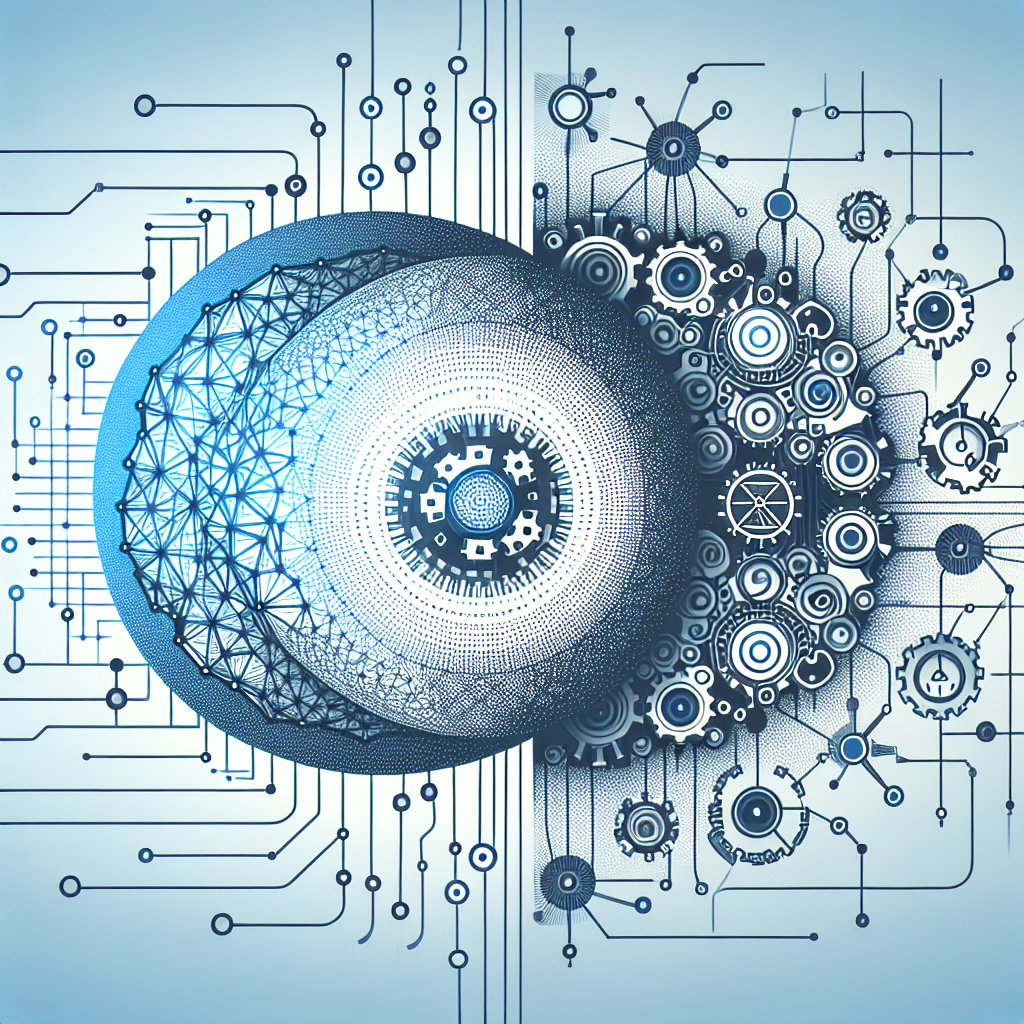Artificial intelligence (AI) and machine learning (ML) are two terms that are often used interchangeably, but they are actually two distinct concepts that play crucial roles in the development of technology. In this article, we will delve into the differences between AI and ML, and discuss the algorithms that power these technologies.
Understanding AI and Machine Learning
Artificial Intelligence (AI) is a broad field of computer science that focuses on creating machines that can perform tasks that typically require human intelligence. AI systems are designed to analyze data, make decisions, and solve problems without human intervention. These systems can be designed to perform a wide range of tasks, from simple image recognition to complex natural language processing.
Machine Learning (ML), on the other hand, is a subset of AI that focuses on developing algorithms that allow computers to learn from data and improve their performance over time. ML algorithms are designed to recognize patterns in data and make predictions or decisions based on those patterns. These algorithms are trained using large amounts of data, and they can continue to learn and improve as they are exposed to more data.
AI vs Machine Learning Algorithms
There are several types of algorithms that are commonly used in AI and ML systems. These algorithms are designed to process data, make decisions, and perform tasks based on the input they receive. Some of the most common algorithms used in AI and ML include:
1. Neural Networks: Neural networks are a type of algorithm that is inspired by the way the human brain processes information. These algorithms are designed to recognize patterns in data by processing information through layers of interconnected nodes. Neural networks are commonly used in tasks such as image recognition and natural language processing.
2. Decision Trees: Decision trees are a type of algorithm that is used to make decisions based on a series of rules or conditions. These algorithms are designed to split data into smaller subsets based on specific criteria, and they can be used to make predictions or classify data into different categories.
3. Support Vector Machines: Support Vector Machines (SVMs) are a type of algorithm that is used for classification and regression tasks. These algorithms are designed to find the optimal hyperplane that separates different classes of data, allowing for accurate predictions and decision-making.
4. Clustering Algorithms: Clustering algorithms are used to group similar data points together based on their characteristics. These algorithms are commonly used in tasks such as customer segmentation, anomaly detection, and recommendation systems.
5. Reinforcement Learning: Reinforcement learning is a type of algorithm that is used to train machines to make decisions based on feedback from their environment. These algorithms are commonly used in tasks such as game playing, robotics, and autonomous vehicles.
FAQs
1. What is the difference between AI and ML?
AI is a broad field of computer science that focuses on creating machines that can perform tasks that typically require human intelligence. ML, on the other hand, is a subset of AI that focuses on developing algorithms that allow computers to learn from data and improve their performance over time.
2. How are AI and ML used in real-world applications?
AI and ML are used in a wide range of real-world applications, including autonomous vehicles, healthcare diagnostics, financial forecasting, and natural language processing. These technologies are revolutionizing industries and changing the way we live and work.
3. What are some challenges in developing AI and ML algorithms?
One of the biggest challenges in developing AI and ML algorithms is the need for large amounts of high-quality data to train these algorithms effectively. Additionally, ensuring the safety, security, and ethical use of AI and ML technologies is a major concern for developers and policymakers.
4. What is the future of AI and ML?
The future of AI and ML is bright, with continued advancements in technology driving innovation in various industries. As these technologies become more sophisticated and powerful, they will continue to transform the way we interact with technology and the world around us.
In conclusion, AI and ML are two important fields of computer science that are revolutionizing the way we interact with technology. By understanding the algorithms that power these technologies, we can gain a better appreciation for the incredible capabilities of AI and ML systems. As these technologies continue to evolve and improve, they will play an increasingly important role in shaping the future of technology and society.

